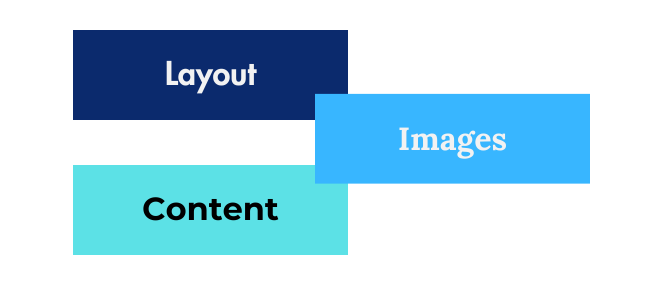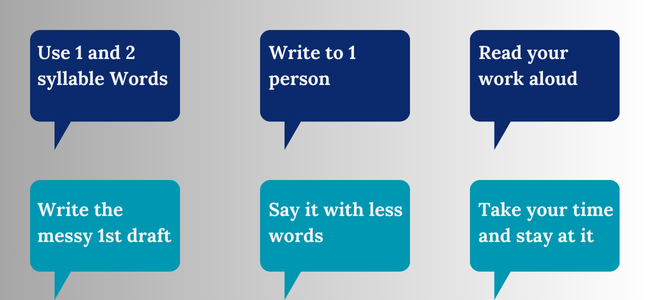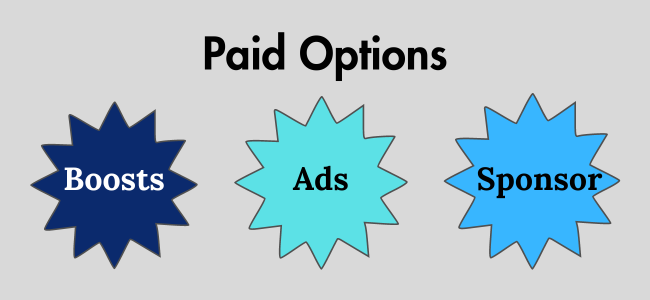

Table of Contents
This top guide to solopreneur newsletters gives you a dynamic overview and links for six of the most helpful, must-read newsletters; plus, there are key tips on how to start your own newsletter.
Each newsletter in this guide gives you sharp and powerful ideas so that you can solve key problems when you run a one-person business.
As a business consultant with 14+ years of experience running an independent business I now advise seasoned and new owners of one- and two-person business models.
Starting, operating and growing a small business is rewarding — and difficult. To simplify your journey I encourage you to read newsletters that solopreneurs write; and then start your own newsletter to advance your understanding of your business model and grow your audience.
The newsletter writers in this guide are top voices in their field, and they’ll help you get better with writing, strategy, posts, email and motivation.
The 6 Must-Read Newsletters
The Content Authority
https://samanthanorth.com/newsletter
If you want to write blog posts that drive sales, you need to answer a key problem with a human voice.

And you need to show you’re an expert on a topic with a unique solution to your audience’s big problem.
Here’s where The Content Authority gives you a big advantage.
Samantha North, the author, is an expert at SEO and using AI to craft initial blog posts that get you results. She’s been deep in the blogging space since 2014 and is a go-to coach on how to use your personal experiences to write blogs that build a profitable business.
Whether you’re trying to get your old blogs back in the mix or you’re starting from stage one, The Content Authority gives you a free, front-row seat at the SEO, blog table. And you get the strategies of an excellent teacher who turns your blogs into sales.
Solopreneur Doorway
https://eriks-newsletter-d8be37.beehiiv.com/subscribe
Before you start and then once you begin to run your solopreneur business you need actionable advice:
Insight and real-world expertise on how to create the right product, solve the right problem and drive sales from clients who want to buy your premier solutions.

It’s not easy to go it alone, and you can have long days when you wonder, “How am I going to make money in this business?”
Solopreneur Doorway gives you actionable advice (with real world humor) to fix three, common challenges:
- How to find and work with clients
- How to drive higher sales
- How to operate a profitable business
Erik shares experience from his 14+ years of building a profitable firm and tackling all types of business issues.
He gives helpful ideas on landing clients, working with virtual assistants and bookkeepers and understanding strategy vs planning.
You also get key takeaways from current business stories and fun ways to break-up your daily routine.
If you’re putting together your first business strategy or hoping to get your first $150K year, Solopreneur Doorway gives you energy to keep running the solo race.
There’s an AI for That
https://newsletter.theresanaiforthat.com
These days, the question on AI is “which AI tools you have to use and why are they helpful?”

There’s an AI for That does the hard part of diving into the AI ocean and collecting the best shells to put in your home office.
New AI solutions hit the market every day, and you don’t have the time or skill to test them all. There are hundreds of newsletters that cover AI and I know you don’t have time to read each of them.
The top teams at Google, Meta, Microsoft, and Salesforce read There’s an AI for That to make sure they stay sharp.
Bring There’s an AI for That to your weekly read list, and you’ll find the tools that turn your ideas into positive business results.
Write with Lauren
https://writewithlauren.beehiiv.com
If you want to excel in the freelance writing world, you need a calm, helpful, and experienced voice to keep you smiling and competitive.

Lauren Ward is that voice. She has 10-plus years of dynamic experience in the freelance writing arena, and she’s a well-known expert in the financial services segment.
Her newsletter give you candid and refreshing views on how to make your freelancing business fun and profitable.
Lauren has a dynamic way of using the ups and downs of her own freelance journey to give you zip and help you sidestep solo business disasters. Whether you’re thinking of starting a freelance writing business or you’re a seasoned freelancer, Write with Lauren gives you the edge you deserve.
Outlier Growth
Brian O’Connor has a smart, insightful approach to business and in each issue of Outlier Growth he gives you the pieces to fix tough puzzles.

Brian draws on dynamic business stories and his problem-solving skills to help you find out which gears are missing in your business.
As a solopreneur, you can miss the team approach to solving tough challenges. When you read Outlier Growth, it’s as though Brian is working right beside you. His rich supply of spectacular business stories offer helpful case studies you can use to improve your operations, sales, teamwork, and profit.
When Outlier Growth hits your inbox, you get a powerful consulting expert who can tear apart your biggest challenges and fix them. Forever.
The Inbox
https://www.inboxnewsletter.com
If email marketing makes you uneasy, The Inbox has solutions to make you a pro.

Whether you’re trying to write your first welcome series for a new lead magnet or developing a sales funnel for a $4,000 digital course, you have to use email marketing.
Max Sturtevant, the author, is a sensational email copywriter and a leading voice in crafting compelling emails. He knows how your emails should look and sound if you want to win clients.
Each issue of The Inbox frames a common email problem and then delivers ideas and smart strategies you can apply.
From subject lines to images to content, your email campaigns have to give your subscribers a reason to open them, read them, and take action. When you subscribe to The Inbox, Max delivers cutting-edge strategies and turns your emails into sales.
The Current Newsletter Landscape
Are Newsletters Obsolete?
No! The newsletter industry is on fire.

Consider these trends:
- According to Beehiiv’s 2024 State of Email Newsletters report, more than 4.0 billion people around the world open email every day. (1)
- Writers launched roughly 26,000 newsletters in 2023 vs. 3,600 in 2022—a 622% increase. (2)
- The average open rate for beehiiv newsletters in 2023 was 39%, while the spam complaint rate was a paltry 0.01% – folks open and read newsletters. (3)
Convertkit published their 2024 comprehensive report on the email newsletter arena, which shows the vibrant growth.

- 25% of creators use email to connect with their readers, which is higher than social media (4)
- 16% of creators surveyed in 2023 planned to launch a newsletter in 2024 (5)
The newsletter space is crowded and is likely to get even more new issues in the next 12–18 months. Since the pandemic, more and more creators are looking for ways to turn their skills into a side hustle or full-time solo gig.
This guide to solopreneur newsletters shows there are sensational resource to help you tackle marketing, SEO, copy writing, strategy and the journey of a one person business.
Ready to start your newsletter or improve the one you write today?
Let’s look at the top platforms.
Newsletter Platforms
There are newsletter platforms of every shape and size. The majority are quite good at giving you the basics.

When you’re reviewing options, start here:
- What does the free version give you vs. the monthly, paid version?
- Does the platform make it easy for you to create, design, send your publication?
- Is it easy to find and track your newsletter’s statistics?
- How simple is it to transfer subscribers from your other lists your newsletter?
When I started to explore newsletter platforms I began with the publications I read each week. I paid close attention to the subscription site, the layouts, and the overall feel. I also leaned on word of mouth from other solopreneurs.
Send an email to a few of the writers you follow and get their take on what they like and don’t like about the platform they use. Here’s my take on the platform I use: beehiiv
beehiiv

I started Solopreneur Doorway with zero subscribers and no experience with digital newsletter systems.
It was important for me to get answers to these questions:
- Which platform is best for non-tech savvy writers?
- Which platform gives you the most flexibility to design a newsletter that suits your style and that your readers will like?
- Can you easily find and understand the key performance metrics to understand how your newsletter is progressing?
I wrote the beehiiv team several emails to get initial answers to those questions and I sent emails to a few of the newsletter authors I followed. In each case, I found the beehiiv team and writers responsive and helpful.
The writers I followed told me beehiiv was easy to use, provided a great help center and gave you access to important data for your publication. And the free edition had many benefits that I could use to get started.
After writing 50+ newsletters, I give beehiiv a solid “A’ grade for the most important categories.
I use the monthly, paid version so I can track more data. The dashboard shows me key metrics on subscriber growth and which posts are most powerful with my audience. If you’re brand new to newsletters the free, beehiiv version is an excellent place to start.
If you’re a seasoned newsletter writer and you’re looking at new platforms, give beehiiv a close look. Convertkit and Substack are also strong options.
Convertkit and Substack
Before I chose beehiiv, I looked closely at Convertkit and Substack.
Each one gives you a wide selection of tools and they make it simple to start. The key issue is to think about where you’ll be in one year. If you are energetic to grow your newsletter I’d focus on the paid versions for newsletter platforms rather than the free versions.
Once you hit 100+ subscribers, you’ll want access to more tools such as migrating subscribers, creating paywalls, sending out bulk emails, and advertising.
I strongly urge you to reach out to the writers who publish newsletters on Convertkit and Substack to get their views.
While each platform provides many helpful tools, you may find that one of them is better in a category that means most to you. I’m confident if you touch base with writers from each platform they will give you their candid feedback.
Starting Your Newsletter
When you start your newsletter it’s natural to have questions.

- Which topics you should cover?
- How often you should publish?
- Will anyone read it?
I empathize with your questions.
When I started Solopreneur Doorway, I wanted to share my thoughts on running a profitable solo business that expands over the years. After 14+ years operating a financial consulting and investment firm, I had a ton of knowledge on how to launch, operate, and then create a nice exit strategy for a business.
I considered different formats, including interviews with leading solopreneurs, case studies, and insight from important news stories.
Over the past year, I put each of those in the newsletter and then let my audience decide which formats and content they preferred. I believe every newsletter is a work in progress, and I did pick up some helpful insight along the way.
Here’s my advice.
- Find the key problem you want to fix
- Create 5–10 sub-categories
- Start writing and ask for feedback
- Improve your writing
Find the key problem you want to fix
When you choose a newsletter topic it’s easy to pick a topic that’s important to you.

Remember, you have to write for the most important person: your reader. When you write about a topic you love and direct it toward one specific person, it’s easier to write a newsletter topic that will succeed.
You may want to hit on vegetarian cooking on a budget, traveling in California for less than $25 a day or starting a rose garden in the desert. The key is to pick a topic that you know well and one that you’ll be excited to write about every week or bi-weekly.
I don’t suggest you start a daily newsletter until you’re sure you have the topic, time and motivation. The first newsletter step is to create your topic.
Next, create 5-10 sub-categories.
Create 5-10 sub-categories
You want your readers to get tremendous value from every issue so it’s key to present your topics from different angles.

This helps you stay fresh and gives you a wide array of sub-topics for your readers to enjoy. This strategy is similar to starting a blog. You pick a niche, write a pillar post, and then write the supporting posts within each pillar.
If you use this approach for your newsletter, you’ll create a healthy list of sub-topics and issues you can discuss with your audience. I promise you that it’s easier and more fun to write your newsletter when you already have a list of angles you can discuss rather than thinking about what to write at the eleventh hour.
Plus, it’s easier to keep subscribers when they’re confident you’ll stay on topic.
Ask for feedback
Writing a newsletter is not the same as writing papers for freshman English.

First, you don’t have the benefit of an amazing teacher to review your writing and share insight. Second, your deadlines are yours to keep or miss.
This means you might write your newsletter at the last minute and not worry about grammar, style and content. You might miss two or three deadlines and then start again. These are big mistakes. While your readers (and friends) might not tell you that your writing is weak, they’ll definitely know as soon as they start reading your copy.
I’m no F. Scott Fitzgerald or Michael Lewis. I have a long way to go, too, on my writing skills.
Here’s what I learned after writing 50+ newsletters, receiving feedback, and reviewing 18+ websites on good writing.
- It takes a while to find your writing voice and style
- Your first three drafts of every newsletter issue will not be good
- Nobody writes an incredible newsletter in 30 minutes. If they tell you they do I promise it’s not good writing.
Your first 5 newsletters
You might need to write 20 newsletters before you feel you have the hang of it. You’re going to wrestle with your layout, font style, image selection, writing voice and, of course, your content.

Do this for your first five newsletters.
- Write three drafts and edit them on your own
- Send the third draft to 2 people who write well and who are in your target audience
- Ask for their feedback
Be specific on what you want them to review:
- Is your writing style easy to read?
- Do they understand your message?
- Does your layout have a cool mix of color, images, headlines and copy?
Feedback on those points may seem unnecessary. I promise you’ll save months of time and frustration if you get helpful feedback early in the process. Beehiiv lets you send a ‘test’ newsletter to multiple recipients before it goes live to your readers.
That’s one of the big benefits I like in the beehiiv platform. Feedback is gold.
Improve your writing
When you become a better writer you serve your readers in a way they grow to love. It takes hard work.

If you want to be a better writer (and I hope you do) you have to practice and lean on the right resources. Here are the ones that I use every time I write an issue for Solopreneur Doorway.
- The Hemmingway Editor:
– an online site that gives you instant feedback on readability, sentence structure, active vs. passive voice and grammar. - Smart Brevity:
– a sensational book by the Axios newsletter team that shows why less is more and how to write with a quick, punchy voice. - An editor:
– I’m fortunate that my dad loves to write and that he takes an active interest in my newsletter. He reads every issue aloud before I send it and gives me feedback. I encourage you to work with an editor. Your writing will improve 10x faster.
Extra Writing Tips
Here are a few extra ideas to make your newsletter fun and easy for your readers to enjoy.

- One syllable words are better than two syllable words and much better than three syllable words.
- Imagine one person that you write for in each issue. This puts the reader in the spotlight and your ego on a shelf.
- Say with less words and read your work aloud; you’ll always hear mistakes faster than when you look for them on your screen.
Once you get your layout, content and style on track you can focus on the next big task: subscribers
How to Grow Your Subscriber List
You have two options to grow your subscriber list. Organic and paid options.

Organic Subscribers
The beauty of organic subscribers is that they are reading your newsletter without any monetary stimulus. They like your content and find it valuable.
If you have a large following on social media then you might get a nice early boost of organic subscribers from those who know you on other platforms. If you’re known on Instagram or LinkedIn then leverage that audience for your newsletter.
Create a 60-90 day kick-off campaign and let your followers know what to expect when your newsletter goes live. This approach is similar to a new product launch for a digital course or product. You want to build anticipation and create a buzz.
If you are starting from scratch and still building your personal brand then it may take a while to get your first hundred readers.
The newsletter space is uber crowded and it’s hard to get subscribers in the first several months. Tell all your friends and family that you’re launching the newsletter and ask them to subscribe.
Make it easy for them to find the subscription link and be sure to craft a nice email welcome series for each new subscriber. Beehiiv and Convertkit make it a snap to create a welcome series.
Paid Options

Newsletters use boosts, paid ads and sponsors to get subscribers.
If you have a large marketing budget and want to pay for subscribers then I think it’s a fine approach. I would wait until you write at least ten issues before you start to put a paid subscriber strategy in motion.
Make sure you have a layout, content and style that your readers prefer.
Once you’re settled and the newsletter is working every week then you can move toward the paid subscriber option. Beehiiv has a wide array of programs you can use to ‘pay’ for new subscribers and I know several writers like these options.
Remember, the mark of a great newsletter is a high open rate and click through rate. Be careful and watch those key metrics while you’re paying for subscribers. If you’re getting new readers through advertising and your open rate is not above 38-40% then I’d work on your content.
Conclusion
When you go solo and start a business you have more questions than answers.
The right newsletter can make an enormous difference in your business and give you ideas to fix tough challenges. From SEO to copy writing to sales to freelancing there’s a newsletter that will become a great friend and help you on the tough days.
Each of the six publications in this top guide to solopreneur newsletters brings value to their readers. I’m confident you’ll enjoy all of them.
The newsletter industry continues to expand and AI makes it easier for folks to start. I don’t think AI can replace a smart, edgy human with a dynamic writing style. Feel free to use AI for ideas, drafts, outlines and inspiration.
Ultimately, your newsletter is your voice and your journey. You can have a sensational newsletter career with 100 subscribers or 100,000.
Your Takeaways:
- Take time to work on your voice, layout and content.
- Ask for feedback before you hit ‘publish’ on each issue and work to improve your writing.
- Stay consistent and meet your deadlines
I promise your audience will find you if you publish on the routine schedule you set. They’ll also refer your publication to their friends and colleagues.
FAQs
Are paid newsletters worth it?
Yes, with caveats.
First, you need a large audience who knows you and trusts your insight. Second, your audience must believe that your newsletter helps them accomplish an important goal.
When I ran my investment firm I paid for several newsletters that delivered outstanding research on companies, stocks and the global economy. I paid for the content because I did not have the time or resources to create that research on my own.
When you start your newsletter I suggest you make it free.
Give yourself time to build an audience and then consider adding content that sits behind a paywall for subscribers who pay. This approach gives you time to test content and see what folks will pay you to publish. While many writers don’t charge for a subscription they made huge dollars when they sold their newsletters.
These big sales still happen. You can always build an exit strategy to sell your newsletter in lieu of charging your readers for every issue.
What is replacing newsletters?
Two words. Tik and Tok.
Folks use it for search, entertainment and education. As of this writing, TikTok has approximately 1 billion monthly active users. (6)
Your readers, and future subscribers, are likely following a TikTok influencer who helps them tackle the same issue you write about in your newsletter. Granted, TikTok videos are shorter and the influencers are renting their audience.
When, if, TikTok shuts down in the U.S. your newsletter will still be up and running and the TikTok personalities could be scrambling.
What do solopreneurs struggle with the most?
When I consult with solopreneurs on their business they share three challenges:
- Creating the right product or service
- Cashflow
- Loneliness
Your primary goal is finding the right problem to solve and creating a solution that people will pay to use.
That’s strategy and it’s step 1.
Once your business is up and running the finances get real. You have monthly subscriptions, freelancers and one-off costs to write your newsletter, test your products and build your audience.
When you leave the employee world and start a solo gig you’ll feel amazing. You’ll have more time to tackle your projects and the independence to pursue your personal goals.
The solo life can be lonely at times. You’ll have days when you’ll want a smart buddy to help you solve a challenge.
You can read more, here, about how to take on those tough days.
The right product, money and solitude are all challenges for every solopreneur. Take constant, active steps to find solutions to those three issues and your solo adventure will be sensational.
Explore each of the newsletters in this blog post and pick a few that target the areas where you want insight.
Endnotes
(1) Tyler Denk, TG & EJ White, 2024 State of Email Newsletters by beehiiv, The Latest beehiiv Data, Trends & Innovations Shaping the Newsletter Industry, beehiiv Blog, January 8, 2024, Last viewed August 25, 2024
(2) Ibid.
(3) Ibid.
(4) Steph Knapp, 2024 Email Marketing Stats Report for the Creator Economy, ConvertKit Resources, Last viewed August 25, 2024
(5) Ibid.
(6) Backlinko Team, TikTok Statistics You Need to Know, Backlinko, Last updated July 1, 2024, Last viewed August 25, 2024
Related Posts

Recent Posts
Choose Your Category
About Erik

Erik Duncan has over 17 years of business and finance experience including investment banking, investment management and starting a successful finance company. He received his MBA in Finance from The Wharton School of Business and his MHA from The University of Iowa.
Your Store Causing You Stress?
A free chat with Erik clears your mind and gives you immediate ideas.
"*" indicates required fields